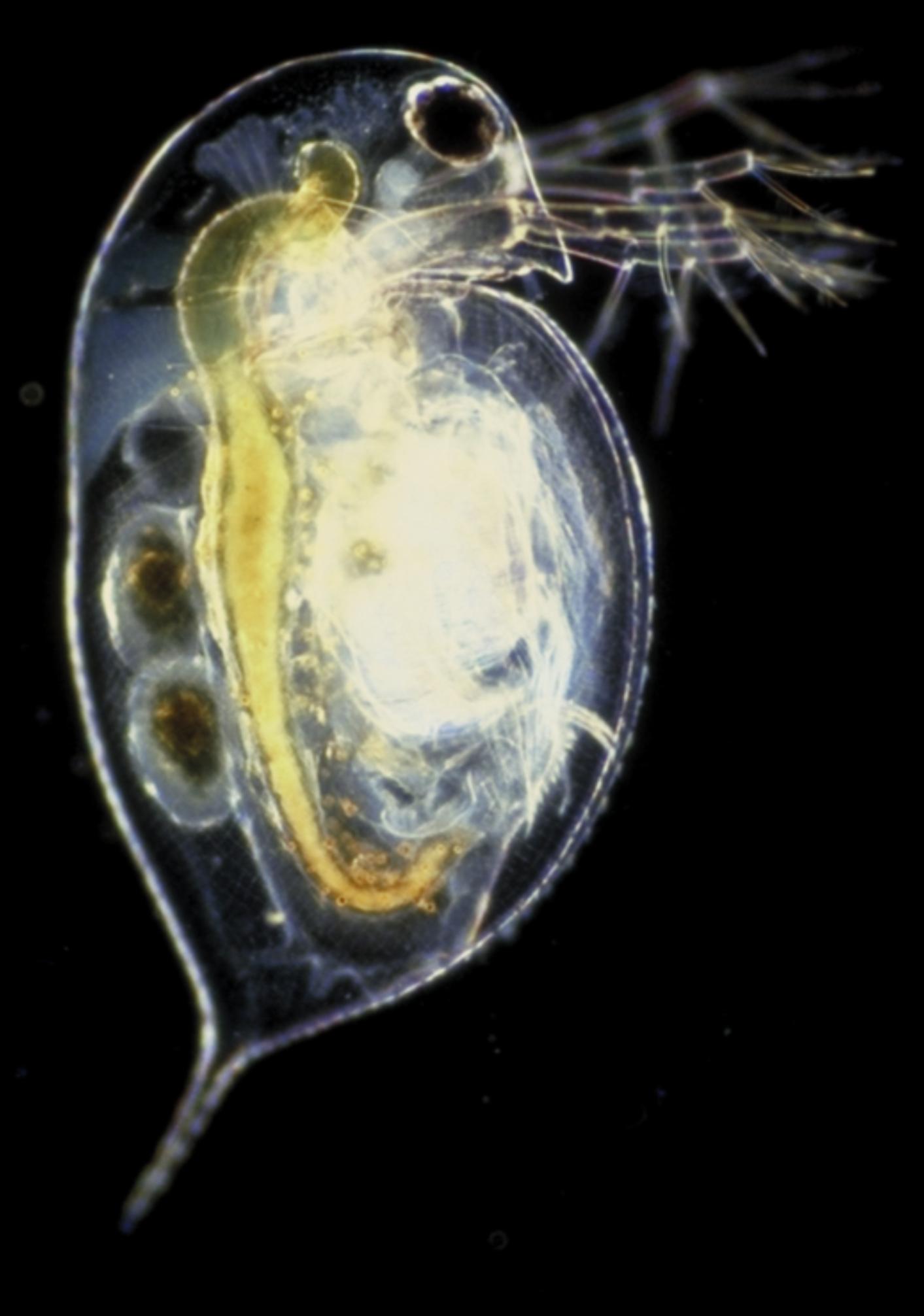 Many diseases and chronic conditions such as cancer, diabetes, asthma and birth defects can be prevented by limiting environmental stressors. Research is under way at Indiana University in genomics to reduce such common health threats by mapping the environmental effects on the function of genes within Daphnia, also known as the water flea. John Colbourne, Ph.D., and Joseph Shaw, Ph.D., at the Center for Genomics and Bioinformatics, and School for Public and Environmental Affairs are measuring the genomic responses of this common resident of freshwater lakes and ponds to pollutants, and creating informative catalogs of the effects of chemicals on this key research organism.
Many diseases and chronic conditions such as cancer, diabetes, asthma and birth defects can be prevented by limiting environmental stressors. Research is under way at Indiana University in genomics to reduce such common health threats by mapping the environmental effects on the function of genes within Daphnia, also known as the water flea. John Colbourne, Ph.D., and Joseph Shaw, Ph.D., at the Center for Genomics and Bioinformatics, and School for Public and Environmental Affairs are measuring the genomic responses of this common resident of freshwater lakes and ponds to pollutants, and creating informative catalogs of the effects of chemicals on this key research organism.
Shaw said Daphnia is a keystone species, whose presence is often directly related to the quality of the environment
Daphnia is one of a few species that many scientists can come together [toward shared research goals] and without much hesitation agree that they are central players to the ecology of aquatic systems. If there are no Daphnia, you start getting food webs out of balance and the health of the environment decreases,” said Shaw.
Named after the virgin nymph Daphne of Greek mythology, Daphnia is an emerging genomic model for life sciences that are concerned with evolutionary and ecological questions. In laboratory tests, a method called microarray analysis is used to measure the gene function of an organism under stressful environmental conditions. Daphnia are exposed to toxic substances to establish how chemicals disturb the regulation of genes. Genes, which are encoded on DNA, are typically activated or repressed from producing messages in the form of messenger RNA— single-stranded molecules that carries specific genetic information of a chromosome. mRNA is then translated into an amino acid chain, which later becomes a working protein. Proteins are essential parts of cells in organisms and key components to cell functions. Specific proteins are linked to genes which define characteristic functions of cells.
Microarray experiments or assays are used to observe how a cell responds to its changing needs as well as to exposure to environmental contaminants by the action of genes. This genomic method differs from the traditional standardized measure, lethality doses, for comparing toxicity levels. Lethal dose is widely-used in toxicology tests to indicate a substance’s acute toxicity by measuring the dose that kills a fraction of the tested group. However, genomic assays are expected to be faster and less expensive once they are used more extensively. Colbourne said assays are also more sensitive and informative than traditional methods.
“What we are attempting to discover the most appropriate DNA-based measures for understanding chemical threats of the health of organisms at concentrations below the commonly used thresholds that begin to kill members of the population. It is at these lower environmentally relevant concentrations that we study whole organism responses to chemicals and their mixtures, based on gene expression measured on microarrays,” said Colbourne.
Even though model species from mouse to fruit fly have been successfully used to generally understand genetic development and cellular processes, Daphnia is rapidly becoming a distinctive target for additional evolutionary studies because it’s ecology is better understood than most animals. Now, because of the activities of a growing international consortium of Daphnia genomics investigators, a large set of tools required to study the function of genes under ecological conditions is readily available. In its semi-annual meeting in March, the Daphnia Genomics Consortium gathers to discuss progress on existing projects and to set further goals
An important goal is to foster more Daphnia genomics work to identify the chemical characteristics of aquatic environments. Water supplies are currently at risk by industrially used chemicals such as metals, pharmaceutical and agricultural chemicals, which are introduced to the environment through daily usage, disposal, or accidental spillage. The National Toxicology Program estimates that more than 80,000 chemicals are manufactured in the United States, in addition to the two to three thousand new compounds introduced annually. However, only around six percent of these chemicals are tested for their toxic effects, according to NTP reports. With the help of genomic tools, Daphnia can be used to understand potential human health risks from industrial chemicals and inform decision makers to set regulatory limits by environmental protection agencies. Colbourne hopes that discoveries made from exposing Daphnia to chemicals in the environment will also tell about how humans respond to contamination because all animals share a significantly large number of genes
However, equally compelling animal models are also needed to study the exposure of environmental pollutants for other types of ecosystems, such as soil, marine estuaries, and reefs.
(1) Daphnia (Photo: Paul Hebert)
(2) Gewin, V, 2005. Functional Genomics Thickens the Biological Plot. PloS Biol. 3:6:e219
(3) Shaw, J.R., Pfender, M.E., Eads, B.D., Klapper, R., Callaghan, A., Sibly, R.M., Colson, I., Jansen, B., Gilbert, D., Colbourne, J.K. 2008. Daphnia as an emerging model for toxicological genomics. Advances in Experimental Biology. 2: 165-219.
(4) Colbourne, J.K., P.D.N. Hebert and D.J. Taylor. 1997. Evolutionary origins of phenotypic diversity in Daphnia. In: Molecular Evolution and Adaptive Radiation. eds. T.J. Givnish and K.J. Sytsma. Cambridge University Press. pp. 163-188.




